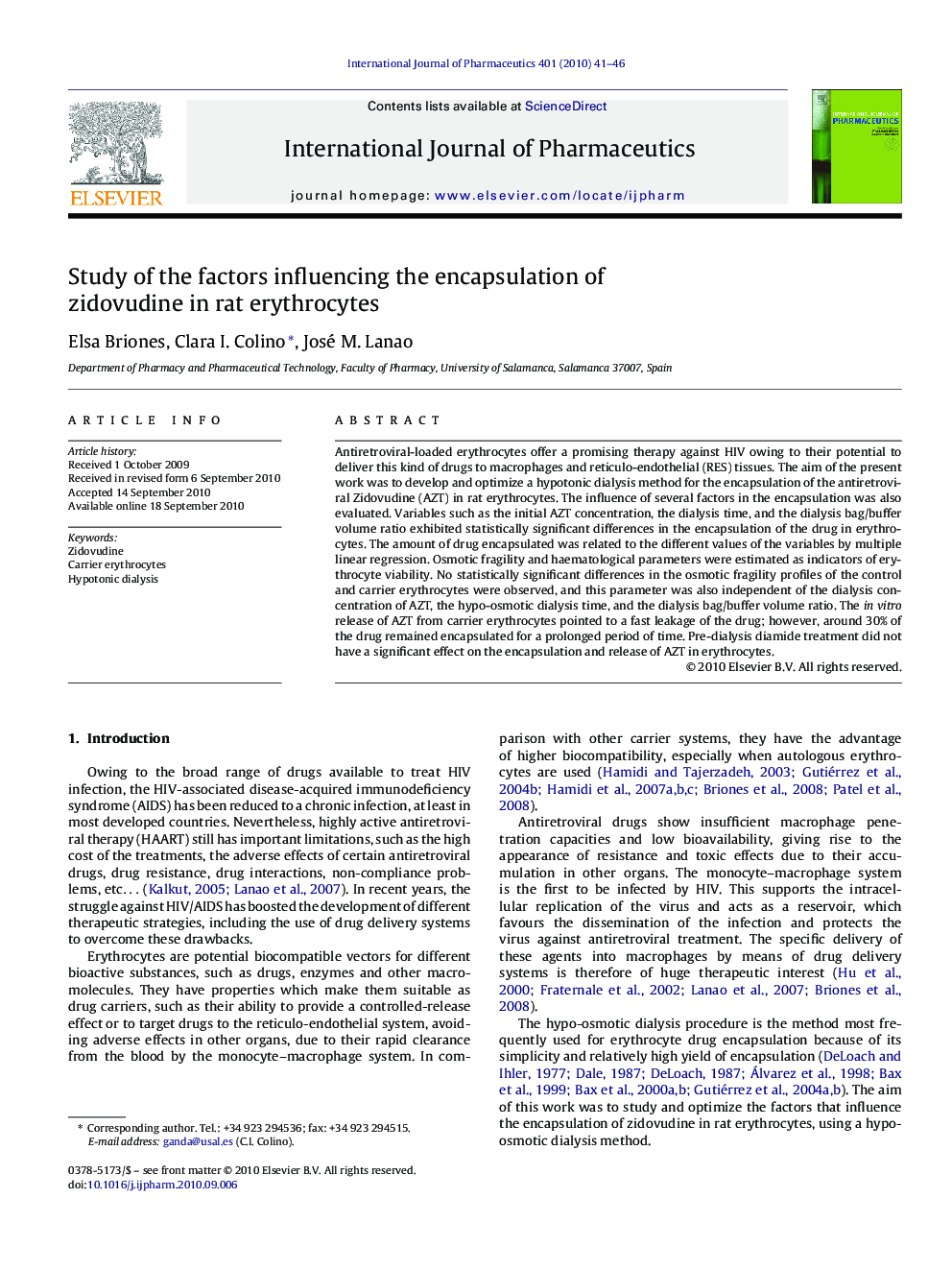| Article ID | Journal | Published Year | Pages | File Type |
|---|---|---|---|---|
| 2503673 | International Journal of Pharmaceutics | 2010 | 6 Pages |
Antiretroviral-loaded erythrocytes offer a promising therapy against HIV owing to their potential to deliver this kind of drugs to macrophages and reticulo-endothelial (RES) tissues. The aim of the present work was to develop and optimize a hypotonic dialysis method for the encapsulation of the antiretroviral Zidovudine (AZT) in rat erythrocytes. The influence of several factors in the encapsulation was also evaluated. Variables such as the initial AZT concentration, the dialysis time, and the dialysis bag/buffer volume ratio exhibited statistically significant differences in the encapsulation of the drug in erythrocytes. The amount of drug encapsulated was related to the different values of the variables by multiple linear regression. Osmotic fragility and haematological parameters were estimated as indicators of erythrocyte viability. No statistically significant differences in the osmotic fragility profiles of the control and carrier erythrocytes were observed, and this parameter was also independent of the dialysis concentration of AZT, the hypo-osmotic dialysis time, and the dialysis bag/buffer volume ratio. The in vitro release of AZT from carrier erythrocytes pointed to a fast leakage of the drug; however, around 30% of the drug remained encapsulated for a prolonged period of time. Pre-dialysis diamide treatment did not have a significant effect on the encapsulation and release of AZT in erythrocytes.
